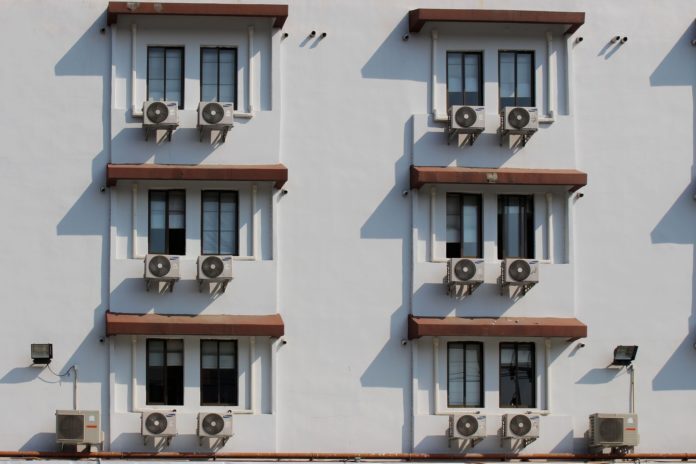
ESCWA: Climate finance to Arab region went mainly to Egypt, Iraq, Morocco
The United Nations Economic and Social Commission for Western Asia (ESCWA) said climate finance to ...

Doubling the energy efficiency of air conditioners could save up to $ 2.9 trillion by 2050 in reduced electricity generation, transmission and distribution costs alone, according to the Cooling Emissions and Policy Synthesis Report from the United Nations Environment Program (UNEP) and the International Energy Agency (IEA).
This will reduce the need for 1,300 gigawatts of additional electricity generation capacity to meet peak demand – the equivalent of all the coal-fired power generation capacity in China and India in 2018.
Worldwide, an estimated 3.6 billion cooling appliances are in use. The report says that if cooling is provided to everybody who needs it – and not just those who can afford it – this would require as many as 14 billion cooling appliances by 2050.
Coordinated international action on energy-efficient, climate-friendly cooling could avoid as much as 460 billion tons of greenhouse gas emissions – roughly equal to eight years of global emissions at 2018 levels – over the next four decades.
Reductions of between 210 and 460 billion tons of carbon dioxide-(CO2) equivalent emissions can be delivered over the next four decades through actions to improve the cooling industry’s energy efficiency together with the transition to climate-friendly refrigerants, according to the report.
The report says countries can institutionalize many of these actions by integrating them into their implementation of the Kigali Amendment to the Montreal Protocol. Signatories to the Kigali Amendment have agreed to reduce the production and use of climate-warming refrigerant gases known as hydrofluorocarbons (HFCs), which has the potential to avoid as much as 0.4°C of global warming by 2100 through this step alone.
Nations must deliver massive cuts in their greenhouse gas emissions to get on track to limit global temperature rise this century to 1.5°C. This is critical to minimizing the disastrous impacts of climate change. As nations invest in COVID-19 recovery, they have an opportunity to use their resources wisely to reduce climate change, protect nature and reduce risks of further pandemics. Efficient, climate-friendly cooling can help to achieve all of these goals,” said Inger Andersen, UNEP Executive Director.
The report highlights the importance of cooling to maintaining healthy communities; fresh vaccines and food; a stable energy supply, and productive economies. The essential nature of cooling services is underlined by the COVID-19 pandemic, as temperature-sensitive vaccines will require quick deployment around the globe; lockdowns forcing people to stay at home for long periods of time are a health concern in many hot countries.
However, increasing demand for cooling is contributing significantly to climate change. This is the result of the emissions of HFCs, CO2, and black carbon from the mostly fossil fuel-based energy that powers air conditioners and other cooling equipment.
“As governments roll out massive economic stimulus packages to deal with the economic and social impacts of the COVID-19 crisis, they have a unique opportunity to accelerate progress in efficient, climate-friendly cooling. Higher efficiency standards are one of the most effective tools governments have to meet energy and environmental objectives. By improving cooling efficiency, they can reduce the need for new power plants, cut emissions and save consumers money. This new report gives policy makers valuable insights to help them address the global cooling challenge” said Dr Fatih Birol, IEA Executive Director.
Action on energy efficiency would bring many other benefits, such as increased access to life-saving cooling, improved air quality and reduced food loss and waste, the report says.
The United Nations Economic and Social Commission for Western Asia (ESCWA) said climate finance to ...
Elizabeth Maruma Mrema, Deputy Executive Director of the United Nations Environment Program (UNEP), said every ...
President Abdel Fattah El Sisi issued eight directives on the Labor Day to ensure providing ...


اترك تعليقا